With the likes of heavyweight composers John Williams, Alan Silvestri and Hans Zimmer dominating the film-score landscape with their unique orchestral palettes the desire for great orchestral film scores has become a staple in Hollywood and the world over for feature films. However, these composers are enabled with huge budgets to record their scores with live instrumentalists. These are the minority of projects in the grand scheme of things and it becomes a real privilege if you are able to have your music recorded by one of these fantastic orchestras.
Nowadays the majority of composers choose a virtual orchestra. With a lot of them out there on the market, it has now become easier than ever to recreate the sound of the symphonic orchestra in your digital audio workstation (DAW). Now whilst they vary in terms of quality generally speaking the top virtual orchestras are very close to the real thing. They offer different mic options (close, stage, surround), reverb effects, different hall environments and playing techniques that even Krzysztof Penderecki would have been proud of (RIP).
Once you’ve chosen your desired library, there are a few things to consider when creating and mixing your composition.
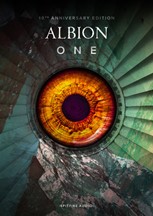
What’s the goal?
I always believe that when you’re writing for virtual orchestra you have to consider what your piece is going to be used for. Is it a realistic mockup that will eventually be performed by a live orchestra at some point in its lifespan? Is it a film-score that will be part of a more hybrid-electronic sounding texture? Or is it something more fantastical? Perhaps you are bending the rules of the conventional orchestra and creating something unique and original?
The answer to these questions may provide you with what direction you may take. Generally speaking I feel the approach of trying to recreate a live-orchestral sound is the best one to follow as most of these sample libraries are recordings of masterful musicians in fantastic venues (for example Spitfire’s ALBION ONE was recorded at AIR Studios in London – a prime choice for film composers - with a phenomenal 109-piece orchestra).
Note Input
With this in mind you might first think about how you intend to input the MIDI from the sample library. The makeup of a lot of these libraries allows for you to control expression and dynamics. By playing with these two MIDI variables you will find that you are able to control the real emotional playing in some samples.
This is even better if you are able to coordinate your note-input with the mod-wheel on your MIDI-keyboard, which will result in fantastic dynamic shape to your musical phrases.
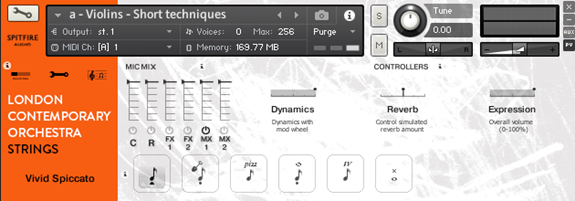
The dynamics and expression features highlighted in Spitfire’s LCO Strings Plugin.
The other thing to consider is how some individual samples within some libraries are either solo-instruments or ensemble-instruments. This is something that a lot of composers overlook and just presume that if they choose ‘6 French Horns’ from EastWest’s Quantum Leap Symphonic Orchestra might result in you having only 6 French Horns even when you play a chord. Wrong. If for example you play a simple triad you are effectively multiplying the number of horns per note. As a result you will end up with a huge 18-horn sound. Now this may be something you desire, but just bare in mind that the more texture you have, the more complex the sound may end up, resulting in a dense initial mix.
Built-in reverbs are also evident in a lot of these samples and you may want to turn them off completely before you note input on your project. There may also be panning and other room-sound that you want to try and get rid of so that you are working with a so-called ‘blank slate.’
Room-noise can be reduced or even completely removed with the help of reducing the amount of decay, sustain and release on the envelope controls within the plugin itself.
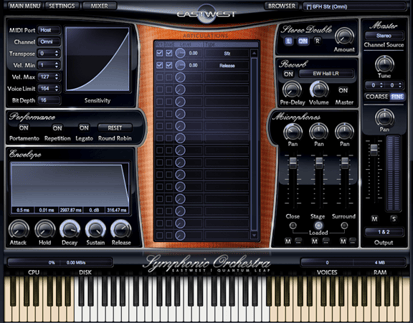
The reverb, microphone and envelope controls on EWQLSO Play plugin.
Panning
After you’ve converted your MIDI into uncompressed audio or frozen them in place in your DAW (this is a much recommended best practice to avoid the horror of CPU overload that may be a problem depending on your computer), the next thing is to consider the six elements required for a great mix:
Balance. The volume-level relationship between musical elements.
Frequency range. Having all audible frequencies properly represented.
Panorama. Placing a musical element in the stereo/soundfield.
Dimension. Adding ambience to a musical element.
Dynamics. Controlling the volume envelope of an individual track or the entire mix.
Interest. Making the mix special.
If we take into account the techniques previously described in this article, we have already touched on ways to attenuate balance, dimension and dynamics through note-input.
However, panning can really clear up a lot of these six points and is something that is very simple to do before worrying about gain and volume levels.
A good technique for this is to follow the physical layout as a map for where to pan our instruments around the big-three panning areas of left, center and right (LCR).
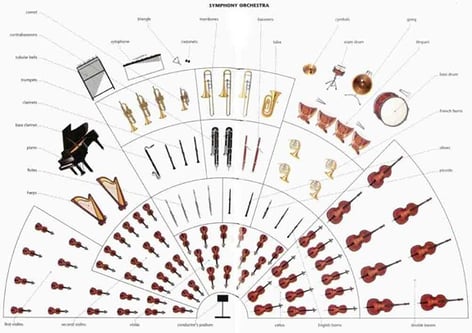
A traditional symphony orchestra layout.
This diagram now gives us a basis for how to pan our instruments around the stereo image. You may also want to bus all of your same instrumental techniques for one set of instruments together in order to make this process easier.
For example, all of your violin playing techniques (spiccato, sul tasto, sul ponticello etc.) may be put in a bus and panned to the left to make it seem as if this sound is coming from the left-hand side of the ‘stage.’
Once you have completed your panning you may find that your instruments are no longer fighting for frequency space.
Compression and EQ
I find that with most virtual orchestras compression and EQ are best used subtly and gently so as not to lose the dynamics of the mix. Generally speaking, because of the nature of the recordings you often find that a simple high-pass on most instruments to rid that nasty room-noise might be all that is needed to get the desired effect.
I also find that an ‘air-boost’ (a high-shelf around 10-14 kHz) on your high-strings and percussion may give your orchestra that life it is after.
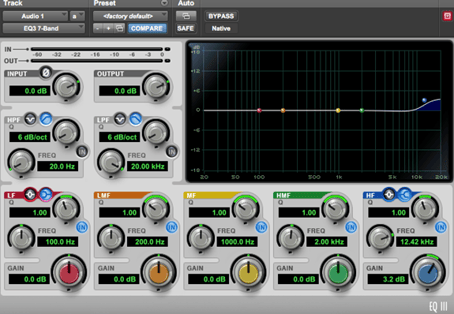
A gentle air-boost.
Reverbs
Again these are best used in moderation. I also find it’s best to create your reverbs on an auxiliary and bus to this from each individual group of instruments. A great long hall reverb with a bright feel can really glue a virtual orchestra mix together – especially when applied gently to all the instruments.
Mastering
Your mix is almost complete but some of the best things to do with virtual orchestral mixes is to let them simmer for a few days. Forget about the mix and come back to it a week later. You may find you want to change everything!
Not only this, but listen to it on as many different sets of speakers as possible – studio monitors, laptop speakers, in your car, on your phone, etc. The more variation, the better and hopefully you will arrive at your perfect virtual orchestra mix.















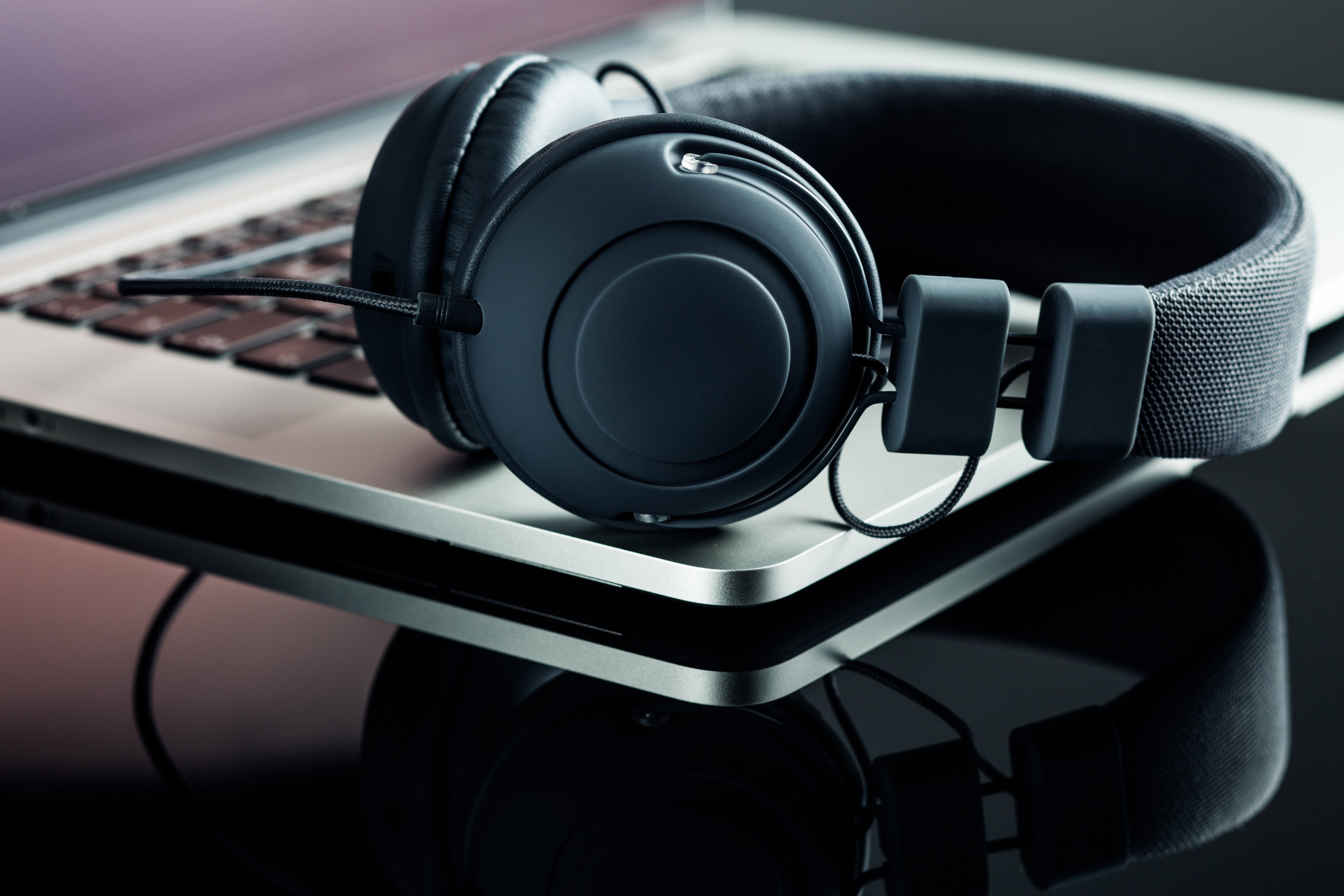
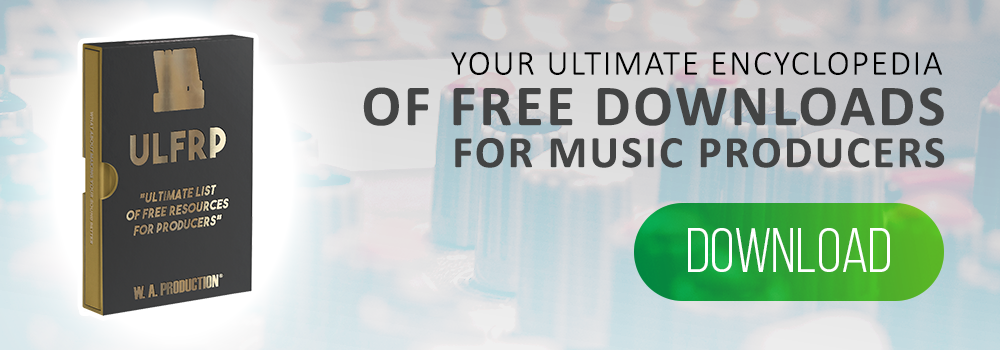
_Cropped.png?width=1600&name=02%20(2)_Cropped.png)




















Your Comments :